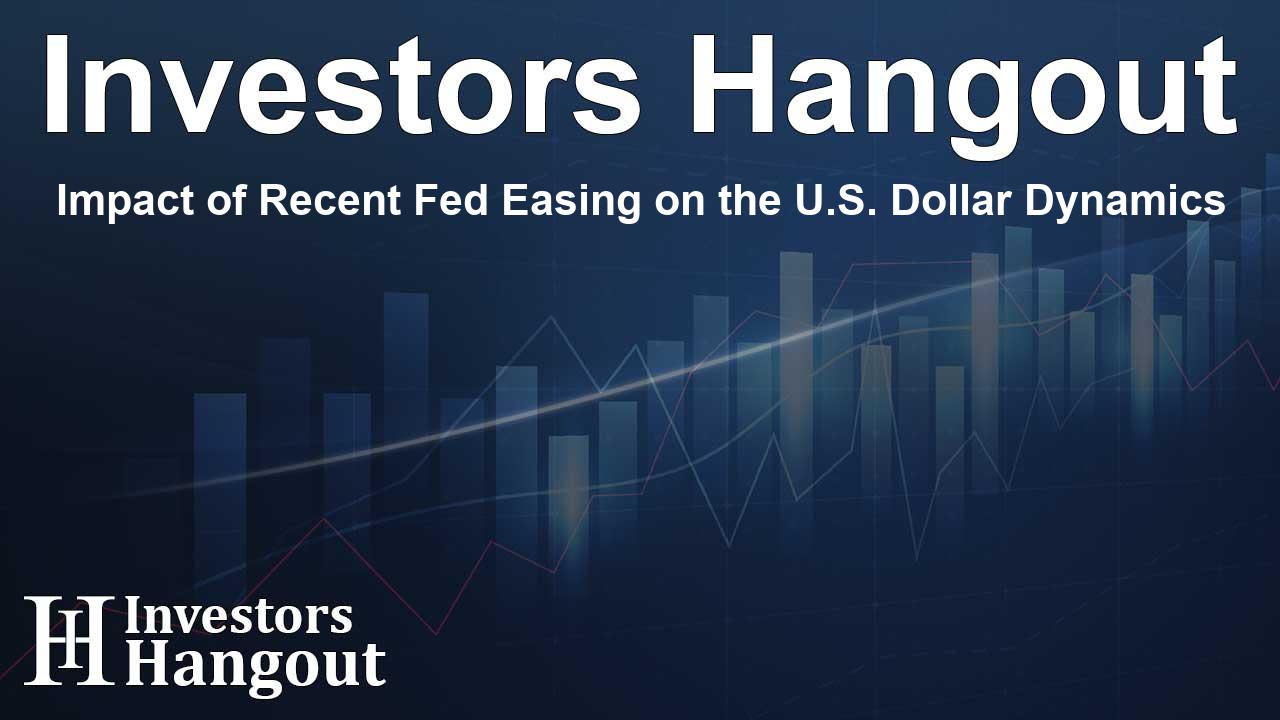Impact of Recent Fed Easing on the U.S. Dollar Dynamics

Understanding Fed Easing and Its Impact on the U.S. Dollar
The Federal Reserve recently made headlines with its decision to implement a 50-basis-point rate cut. This significant monetary policy change has many traders, investors, and analysts contemplating the potential ramifications for the U.S. dollar (USD) and how the current scenario compares to historical events.
Current Economic Environment
According to analysts, the current economic landscape does not present a clear historical comparison. It mirrors some aspects of 1995 when the dollar was perceived as undervalued. Yet, in today’s context, the USD appears to be overvalued, complicating efforts to draw direct parallels from the past.
USD's Initial Reaction
After the Fed's rate cut was announced, the dollar initially depreciated, causing concerns among stakeholders. However, this downward movement was followed by a rebound, attributed to a press conference led by Fed Chair Jerome Powell. His remarks maintained a hopeful stance regarding the economy, which helped to reassure the markets about the dollar’s strength.
The Mixed Historical Performance of the USD
Historical trends indicate that the USD's performance during past easing cycles has been inconsistent. Bank of America highlights that it typically does not fare well during these periods, except for the notable exception in 1995. During that year, the dollar's undervaluation provided a unique scenario that is unlikely to repeat under current conditions.
Future Expectations Amidst Rate Cuts
Looking forward, the outlook is one of gradual depreciation for the dollar, as it stands at relatively high valuations. The path of the USD will likely depend on fluctuations in the labor market. If data from the employment sector weakens, it may prompt additional rate cuts by the Fed, further influencing the dollar's trajectory.
Global Economic Influences
Another factor at play is the performance of economies outside the U.S. The dollar will also be affected by foreign economic conditions. In this context, analysts note that optimism in global growth could lead to a more rapid decline in the dollar. For the moment, the driving force behind the dollar remains U.S. interest rates and market risk appetite due to economic data releases.
The Role of Hedge Funds and Real Money Investors
As the Fed's easing approach evolves, hedge funds may consider reducing their long positions on the dollar, while institutional investors may look to short the currency. This change in positioning could ultimately reshape the dynamics of the USD as various market actors adjust to the new monetary policy landscape.
Conclusion on the USD's Path
In summary, the dual influence of U.S. economic indicators along with global growth considerations will play a pivotal role in determining the USD's future. Traders and investors will need to stay alert to shifts in both domestic policy and international conditions. Overall, while the Fed's actions are set to impact the dollar, the financial landscape is fluid, and outcomes may vary depending on a range of interconnected factors.
Frequently Asked Questions
What is the recent decision made by the Federal Reserve?
The Federal Reserve recently decided to implement a 50-basis-point rate cut, affecting the U.S. dollar.
How does today’s economic environment compare to 1995?
While there are some similarities, today’s USD is considered overvalued, unlike in 1995 when it was undervalued.
What influenced the initial reaction of the USD after the rate cut?
Initially, the dollar depreciated but later rebounded due to positive comments from Fed Chair Jerome Powell.
Will the dollar continue to depreciate?
It is likely to gradually depreciate, primarily depending on future labor market data and other economic indicators.
What factors could enhance the decline of the USD?
Improved economic conditions globally and changing U.S. interest rates could significantly influence the dollar's decline.
About The Author
Contact Caleb Price privately here. Or send an email with ATTN: Caleb Price as the subject to contact@investorshangout.com.
About Investors Hangout
Investors Hangout is a leading online stock forum for financial discussion and learning, offering a wide range of free tools and resources. It draws in traders of all levels, who exchange market knowledge, investigate trading tactics, and keep an eye on industry developments in real time. Featuring financial articles, stock message boards, quotes, charts, company profiles, and live news updates. Through cooperative learning and a wealth of informational resources, it helps users from novices creating their first portfolios to experts honing their techniques. Join Investors Hangout today: https://investorshangout.com/
The content of this article is based on factual, publicly available information and does not represent legal, financial, or investment advice. Investors Hangout does not offer financial advice, and the author is not a licensed financial advisor. Consult a qualified advisor before making any financial or investment decisions based on this article. This article should not be considered advice to purchase, sell, or hold any securities or other investments. If any of the material provided here is inaccurate, please contact us for corrections.
